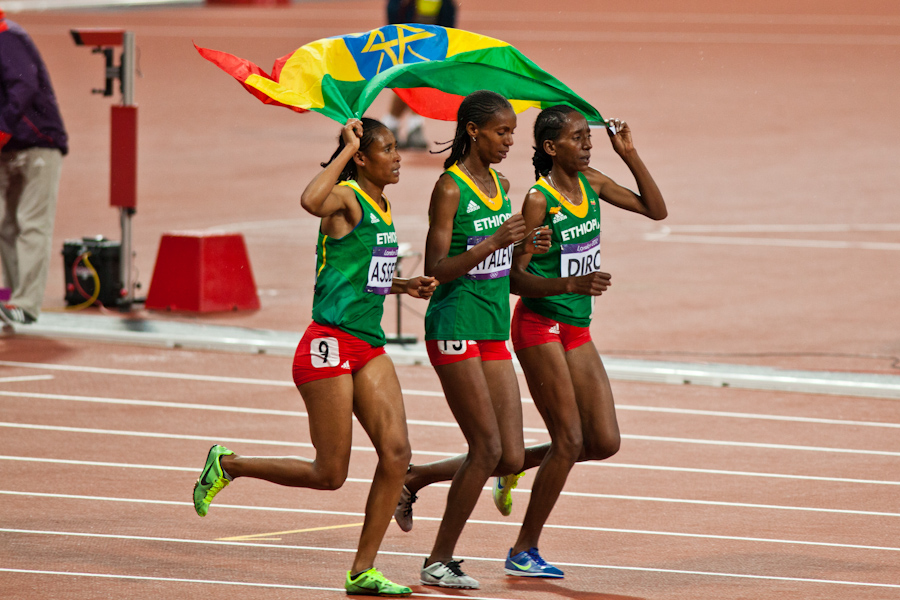Ethiopian Steeplechase Techniques and Strategies

Ethiopian steeplechase runners have consistently dominated the world stage, leaving an undeniable mark on the sport. Their success is attributed to a combination of factors, including unique running techniques, strategic approaches, and physiological advantages. This section delves into the specific techniques and strategies employed by Ethiopian steeplechasers, comparing them to those of other nationalities and examining the role of altitude training and Ethiopian physiology.
Running Techniques
Ethiopian steeplechasers are renowned for their efficient and economical running style, characterized by a smooth, flowing stride and a low center of gravity. This technique allows them to conserve energy and maintain a consistent pace over the demanding distance.
- Long Stride Length: Ethiopian runners tend to have longer strides compared to other nationalities. This enables them to cover more ground with each step, minimizing the number of strides required to complete the race.
- Cadence: While maintaining a longer stride, Ethiopian steeplechasers also demonstrate a relatively high cadence, indicating a quick turnover rate. This combination of long strides and high cadence results in a smooth and efficient running style.
- Arm Swing: Ethiopian runners utilize a controlled and synchronized arm swing, maintaining a balanced and upright posture throughout the race. This technique contributes to their overall efficiency and helps them maintain momentum.
Water Jump Strategies
The water jump is a defining feature of the steeplechase, and Ethiopian runners have developed unique strategies to overcome this obstacle efficiently.
- Approach: Ethiopian steeplechasers typically approach the water jump with a controlled pace, maintaining their momentum and rhythm. This allows them to maintain a smooth transition over the barrier and avoid unnecessary energy expenditure.
- Takeoff: Ethiopian runners tend to have a shorter takeoff distance compared to other nationalities. They rely on their strong leg muscles to propel themselves over the barrier, minimizing the time spent in the air.
- Landing: Ethiopian steeplechasers aim for a precise landing, ensuring a smooth and controlled entry into the water. This helps them maintain their momentum and minimize the impact on their body.
Altitude Training and Physiology, Ethiopian steeplechase
Altitude training plays a significant role in the success of Ethiopian steeplechasers. The high altitude of Ethiopia’s training grounds exposes athletes to lower oxygen levels, forcing their bodies to adapt and become more efficient at oxygen utilization.
- Increased Red Blood Cell Count: Living and training at high altitudes leads to an increase in red blood cell count, which carries oxygen throughout the body. This physiological adaptation enhances the athletes’ oxygen-carrying capacity, giving them an advantage in endurance events.
- Enhanced Aerobic Capacity: Altitude training improves the athletes’ aerobic capacity, enabling them to sustain a high level of physical activity for extended periods. This is crucial in a demanding event like the steeplechase.
- Body Composition: Ethiopian athletes tend to have a lean body composition, which contributes to their running efficiency and endurance. This is partly attributed to their genetic predisposition and lifestyle factors.
Strategic Approaches
Ethiopian steeplechase runners often employ strategic approaches that set them apart from their competitors.
- Pace Management: Ethiopian athletes are known for their exceptional pace management skills. They tend to start conservatively, gradually increasing their pace as the race progresses, conserving energy for the final push.
- Water Jump Tactics: Ethiopian steeplechasers often utilize strategic water jump tactics, aiming to gain an advantage over their competitors. They may choose to take the lead at the water jump, forcing others to follow their pace.
- Late Kick: Ethiopian athletes are known for their powerful late kick, enabling them to surge ahead in the final stages of the race. This strategy is often decisive in determining the outcome of the competition.
The Ethiopian steeplechase tradition is a testament to the country’s athletic prowess, with legendary runners like Kenenisa Bekele and Gebreselassie leaving an indelible mark on the sport. After a grueling race, a runner might find solace in a comfortable brown leather occasional chair , reflecting on the strategy and endurance that propelled them to victory.
The legacy of Ethiopian steeplechase continues to inspire generations of athletes, pushing them to achieve their own personal bests.
Ethiopian steeplechase runners, known for their exceptional endurance and speed, often train in challenging conditions, pushing their limits to achieve greatness. After a grueling training session, a moment of relaxation in a leather club chair and ottoman set could be the perfect way to unwind and recover.
This classic comfort combo would offer a luxurious and supportive seating experience, allowing athletes to recharge and prepare for their next challenge on the track.